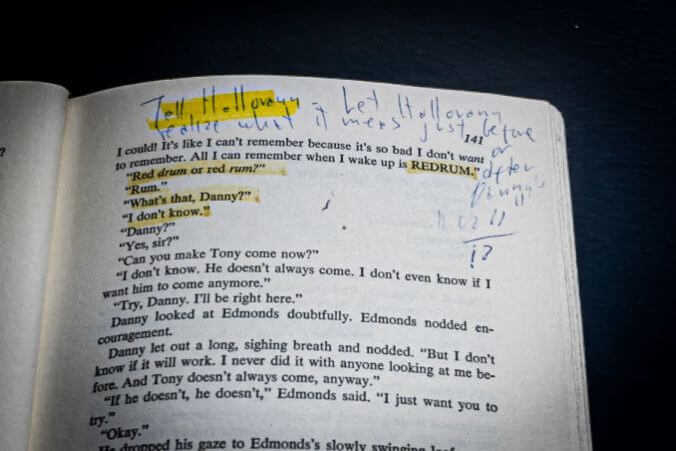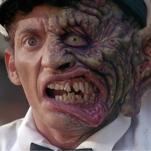The Kubrick Cinematic Universe Overtakes The Shores of Istanbul
All photos by Joshua Mellin
Gathering artifacts including original movie props, planning materials, camera equipment, set models and designs, Stanley Kubrick: The Exhibition attempts to peel back the curtain on the perfectionist filmmaker’s self-taught interdisciplinary filmmaking approach. Often cited as perhaps the greatest and most influential director, this collection from his personal estate displays the minutiae that went into researching, planning, framing and filming his works.
Recently showcased at Barcelona’s Centre de Cultura Contemporània de Barcelona (CCCB) beginning in 2018, London’s Design Museum in 2019, New York City’s Museum of the Moving Image as Envisioning 2001: Stanley Kubrick’s Space Odyssey and Madrid’s CBA – Círculo de Bellas in 2021, Istanbul marks the exhibit’s 22nd stop.
We caught the exhibit at the new Istanbul Sinema Müzesi (Museum of Cinema), a former palatial estate in the center of the city, with a sprawling history all its own. In the 19th century, a prominent banker named Agop Köçeya, whose family had acquired a fortune by loaning to the Ottoman Empire, acquired the land following the great fire of Pera in 1870. Köçeya built his winter residence here, an ornate mansion designed in the Renaissance Revival architectural style with neoclassical features inspired by an Italian villa, with ceiling decorations, plaster reliefs, marble replaces and parquet flooring. It was completed in 1877.
Köçeya fell out of favor during the reign of Ottoman Sultan Abdul Hamid II, and fled Istanbul, donating the building to the Armenian Catholic Church. During World War I, the building functioned as a court for the occupying English army until 1922. In the 1930s, a pair of tobacco magnate brothers acquired the structure and renovated it into an entertainment venue, and the former horse stables became a music venue named Moulin Rouge. In 1945, entertainment businessman Muhittin Öztuna renovated the space, introducing an 1,800 seat movie theater, the Atlas. Since the 1980s, it’s remained a theater in the control of the Ministry of Culture and Tourism and still houses the Atlas Theater. In 2021, the Cinema Museum was founded.
The museum occupies the former stage theater building and contains artifacts from Turkey’s cinematic history, from cameras that recorded some of Turkey’s founding moments, to an art gallery and interactive digital museum recreating historic scenes from Turkish cinema.

Walking up the grandiose marble stairs, you’ll get the unmistakable feeling of being transported back 150 years, or to a Kubrick film set in the Ottoman Empire. A white piece of paper simply reads “Stanley Kubrick Sergisi-” with an arrow pointing up to what looks like could be the entrance to the space zoo human habitat from the end of 2001.
Much like the settings in his films, the museum seemed to embody the spirit of the master director. The entirety of Kubrick’s career is highlighted, from his start as a photographer for LOOK Magazine and early short works, to full areas devoted to the development of films Fear and Desire, 2001: A Space Odyssey, Killer’s Kiss, The Killing, Paths of Glory, Spartacus, Lolita, Dr. Strangelove, A Clockwork Orange, Barry Lyndon, The Shining, Full Metal Jacket, and his final film Eyes Wide Shut.
Single frames from Kubrick films can seem to establish an entire universe, and leave you reaching for deeper meaning. The exhibit allows you to examine those details from the creators perspective, and the personal philosophy that he poured into the art he produced intently as his life’s work.
Spotting the Droog costume from Clockwork Orange, and then turning down a hallway to confront The Shining’s Grady Twins, as Full Metal Jacket’s Gomer Pyle’s face flashes across a screen, with the masked visage of Tom Cruise’s Bill Harford from Eyes Wide Shut looking on, all gathered in one room, reinforces how unsettling a Kubrick Cinematic Universe would actually be. Though it’s hard to imagine anyone but HAL 9000 being victorious in that crossover.
Here are a few highlights from some of the film’s featured in the exhibition:
Dr. Strangelove (1964)
In my own years of rewatching Dr. Strangelove, it has only felt more relevant over time, despite being close to 60 years old at this point. In 1989 it was included in the United States Library of Congress’ inaugural 25 films selected for preservation in the National Film Registry for being “culturally, historically, or aesthetically significant.”

Alternate title ideas including Dr. Strangelove’s Secret Uses of Uranus.

War room model designed by Sir Ken Adams, who once noted: “When Ronald Reagan became president of the United States he asked the chief of staff to show him the war room of Dr. Strangelove… He believed it was in the Pentagon.”

Rare still photos from the infamous custard pie fight finale that was filmed but cut and the footage ultimately lost.
A Clockwork Orange (1972)

One of the most recognizable pieces in the exhibit, Alex’s Droog costume was worn in the film by actor Malcolm McDowell.

Detailed plans for Alex’s room

Evening Standard newspaper original prop

Clapperboard from A Clockwork Orange
The Shining (1980)

A cutout of the Grady Twins haunts the entrance to The Shining section of the exhibition.

Hedge maze model.

Kubrick’s meticulous handwritten notes in his personal copy of Stephen King’s novel. King was famously disappointed in the creative liberties taken in the film and has cited it as his least favorite adaptation of his work.

Adler Tippa S typewriter, same used by the character Jack Torrance, portrayed by Jack Nicholson in The Shining.

Apollo 11 sweater worn by the character Danny Torrance, portrayed by Danny Lloyd.

Axes wielded by Jack Nicholson portraying Jack Torrance in The Shining.

Precise handwritten notes by Kubrick for the second unit filming at Timberline Lodge in Portland, Oregon.
Full Metal Jacket (1987)

The Full Metal Jacket section contains Kubrick’s personal copies of the book Dispatches by Michael Herr, which detailed his experience as a war correspondent during Vietnam, and Gustav Hasford’s 1979 novel The Short-Timers, the inspiration for the film. Also on display are various photographs and a model of a Marine helicopter.

Joker’s Glasses and Mickey Mouse Watch
Eyes Wide Shut (1999)

Mask and disguise worn by Doctor Bill Harford, portrayed by Tom Cruise, with reflections of unused posters designed by Kubrick’s wife and daughter, Christiane and Katharina Kubrick.

“Fidelio” password napkin

Threatening letter addressed to Doctor Bill Harford. Original prop. “Give up your inquiries which are completely useless, and consider these words a warning. We hope, for your own good, that this will be sufficient.”

Eyes Wide Shut Pablo Picasso-inspired mask.
Unfinished Works: A.I. Artificial Intelligence

Kubrick worked on developing A.I. Artificial Intelligence since the early 1970s and passed off the project to Steven Spielberg in 1995, who completed the film in 2001 as a kind of homage to Kubrick after the director’s death in 1999. Storyboards show how it may have progressed under the original vision.
2001: A Space Odyssey (1968)

The grand finale at the Istanbul presentation for Stanley Kubrick: The Exhibit was a special spaceship styled installation on the museum’s 4th floor showcasing 2001.

Space suit costume

Ape mask from 2001

A replica of the fictional artificial intelligence HAL 9000

Spaceship model and poster designs

Discovery One set model

2001’s Star Child
Stanley Kubrick: The Exhibit at ?stanbul Sinema Müzesi (Museum of Cinema) is scheduled through March 1st, 2022. Tickets are 80TL (about $5), available at the box office.
Joshua Mellin is a Chicago-based writer and photographer who’s work has appeared everywhere from major-label album covers and Super Bowl advertisements. You can follow his adventures at twitter and instagram.







































